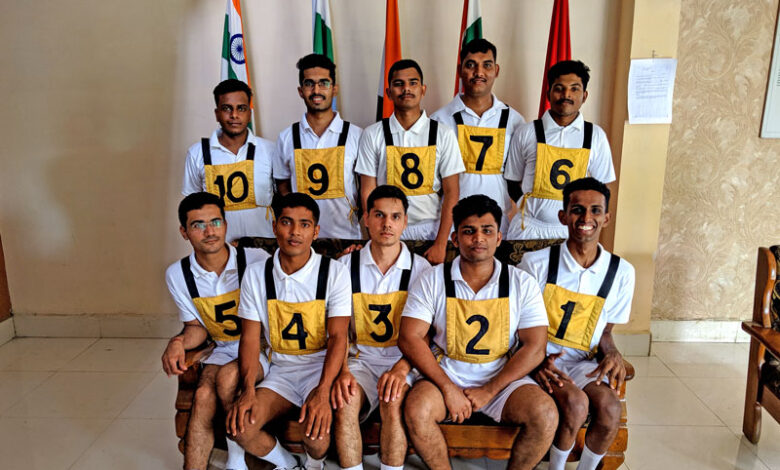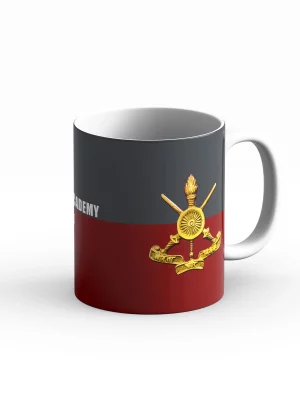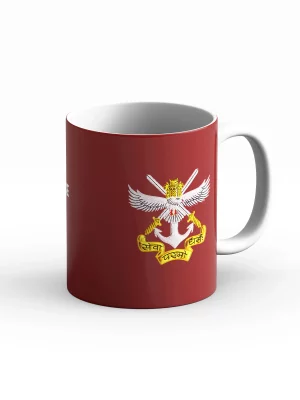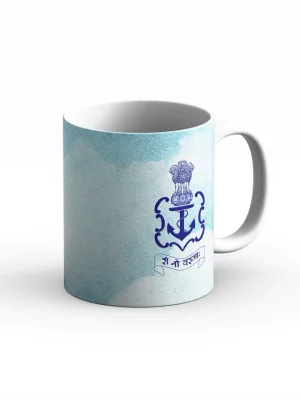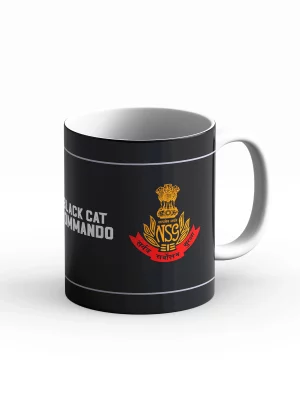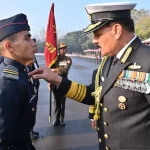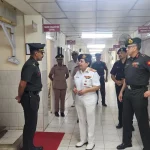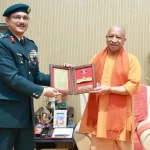The Services Selection Board (SSB) interview process comprises various tests and assessments to evaluate a candidate’s suitability as an officer in the Armed Forces. After completing the Psychological Tests, you move on to the Group Testing Officer (GTO) Tasks.
These tasks focus on assessing how you interact within a group, your leadership qualities, communication skills, and overall sociability—key traits for any officer who must work effectively with colleagues and subordinates.
Below is a comprehensive guide to the GTO tasks, their sequence, and essential tips to help you perform at your best.
1. Importance of GTO Tasks
- Evaluates Team Dynamics: An officer often functions within a team. GTO tasks assess how well you coordinate, communicate, and collaborate with others.
- Tests Practical Leadership: While psychological tests gauge your mental aptitude and subconscious traits, GTO tasks show your visible leadership and problem-solving approach.
- Real-Time Interaction: GTO tasks put candidates in real or semi-real scenarios where they must work together to solve problems, thereby demonstrating spontaneity and teamwork.
2. Overview of GTO Tasks in SSB
- Group Discussion (GD)
- Group Lecturette
- Progressive Group Task (PGT)
- Half Group Task (HGT)
- Command Task (CT)
- Final Group Task (FGT)
- (Additional tasks often include Individual Obstacles and Group Obstacle Race, depending on the schedule.)
Each task gives the GTO clues about your social, leadership, and problem-solving skills. Let’s explore each in detail.
3. Group Discussion (GD)
3.1 Purpose
The Group Discussion is the first GTO task and often forms the GTO’s initial impression of your group interaction. This task aims to evaluate your general awareness, communication skills, and ability to present logical arguments in a group forum.
3.2 Format
- There are typically two rounds of discussion.
- In the first round, you get a choice of three topics, usually simple and broad-based, ensuring every candidate can contribute.
- In the second round, the GTO gives a more challenging topic, often requiring a good level of current affairs and general knowledge to excel.
3.3 Tips for GD
- Initiate if Confident: Starting the discussion can give you an edge, but only if you have a clear point.
- Stay Organized: Structure your arguments and speak with clarity.
- Listen Actively: Build on others’ points and avoid interrupting.
- Be Courteous: Respect differing views and maintain a friendly tone.
4. Group Lecturette
4.1 Purpose
The Group Lecturette tests your public speaking, confidence, and organizational skills of thought. You have to deliver a short speech to your group within a three-minute timeframe.
4.2 Format
- All candidates sit in a circle.
- Each candidate is given a card with multiple topics.
- You select one topic, prepare for a minute, and then speak for around three minutes.
4.3 Tips for Lecturette
- Speak Clearly: Focus on clarity and avoid filler words.
- Maintain Posture & Eye Contact: Display confidence in your body language.
- Use a Structure: Introduce the topic, present key points, and conclude with a summary.
- Stay Within Time: Practice time management to avoid rushing or overshooting.
5. Progressive Group Task (PGT)
5.1 Purpose
PGT is the first outdoor task in the GTO series. It tests how a group collaborates to solve physical obstacles logically. You must work as a team to get from a start line to a finish line, crossing multiple obstacles that increase in difficulty progressively.
5.2 Format
- The group is provided with helping materials such as:
- Balli (Wooden Log)
- Plank (Phatta)
- Rope
- A Fragile Load to be carried across
- The team follows specific rules regarding color-coded regions and how to use the materials.
- The obstacles go from easy to hard, ensuring you adapt and strategize as you progress.
5.3 Key Rules in PGT (Also Applicable to HGT, CT, and FGT)
- Color Coding
- White: Both candidates and helping materials may touch these parts.
- Black (sometimes Yellow in certain boards): Only candidates can stand or touch, no helping materials allowed.
- Red: Out of bounds for both candidates and helping materials.
- Rigidity Rule: You cannot tie two rigid objects (plank + log) together, but you can tie them to the obstacle structure if allowed.
- Infinity Rule: The start and finish lines extend infinitely; you cannot circumvent the obstacle.
- Group & Load Rule: Everyone and every item must move forward together; no leaving anyone behind.
- Distance Rule: Jumps over four feet are not allowed; you must use the helping materials to bridge larger gaps.
5.4 Tips for PGT
- Listen to the GTO Briefing: Often, GTOs give subtle hints.
- Suggest Practical Ideas: Be creative but follow the rules.
- Coordinate and Communicate: Ensure every member knows the plan.
- Stay Positive: Encourage teammates and maintain morale.
6. Half Group Task (HGT)
6.1 Purpose
HGT is similar to PGT but involves smaller groups—the group is divided, usually into two sub-groups. This allows the GTO to observe candidates more closely and assess individual performance within a smaller team setup.
6.2 Format & Rules
- The tasks and rules are similar to PGT.
- The same color-coding and distance restrictions apply.
- With fewer people, more individual participation and leadership are often visible.
6.3 Tips for HGT
- Take Initiative: Speak up if you have a solid idea but don’t dominate.
- Facilitate Teamwork: Motivate quieter members to contribute.
- Remain Attentive: Small details matter, especially with fewer participants.
7. Command Task (CT)
7.1 Purpose
The Command Task specifically evaluates your command and control skills. It tests how well you can plan, direct, and execute a mini-mission while guiding two subordinates.
7.2 Format
- Each candidate is called individually to the obstacle area.
- You act as a commander and choose two group members as your subordinates.
- You must plan a way to cross the obstacle within the given time, using the provided resources (balli, plank, rope, etc.).
7.3 Tips for Command Task
- Exhibit Clear Leadership: Give precise, logical instructions.
- Time Management: Work swiftly but systematically.
- Be Decisive: GTO observes your decision-making under pressure.
- Encourage Input: You can consider suggestions from subordinates if time allows.
8. Final Group Task (FGT)
8.1 Purpose
The Final Group Task usually marks the last outdoor GTO task. It is a collective obstacle where the entire group, including any members who might not have performed strongly before, get a final opportunity to display teamwork and problem-solving.
8.2 Format
- Similar to PGT but shorter and usually one obstacle.
- Involves all group members working together again under time constraints.
8.3 Tips for FGT
- Collaborate Wholeheartedly: Give everyone a chance to contribute.
- Finish Strong: Reaffirm your teamwork and positive attitude.
- Apply Learned Lessons: Use the strategies and insights gained from previous tasks.
9. Additional GTO Tasks
- Individual Obstacles (IO): Tests your physical endurance, agility, and confidence on different obstacle structures.
- Group Obstacle Race (Snake Race/Inter-Group Obstacle Race): Tests how well you can coordinate, cheer, and carry a load (like a snake-like rope) collectively in a competitive environment against other groups.
10. Final Tips for GTO Tasks
- Maintain a Positive Attitude: Encourage peers, offer constructive ideas, and avoid blame games.
- Be Yourself: The GTO values genuineness over artificial behavior.
- Stay Informed: Current affairs and general knowledge can help you stand out in discussions.
- Showcase Officer-Like Qualities (OLQs): Demonstrate initiative, effective communication, empathy, and foresight throughout the tasks.
- Listen Carefully: GTOs often give subtle hints and observe how well you follow instructions.
Also Read
- Common Mistakes in TAT
- How to Pass Screening Test
- How to Show OLQs in Group Discussion
- How to Tackle Command Task
- How to Be a Hero of Your SSB Group
- New Lecturette Topics
Conclusion
The GTO Tasks are a vital part of the SSB interview process, offering a real-time look at how you function in a group setting, solve problems under constraints, and exhibit leadership. By understanding each exercise—its purpose, rules, and best practices—you can approach the GTO tasks with confidence.
Remember, consistent teamwork, clarity in communication, respect for fellow candidates, and a solution-oriented mindset will go a long way in leaving a positive and lasting impression on the assessor.
Best of luck with your SSB journey!

